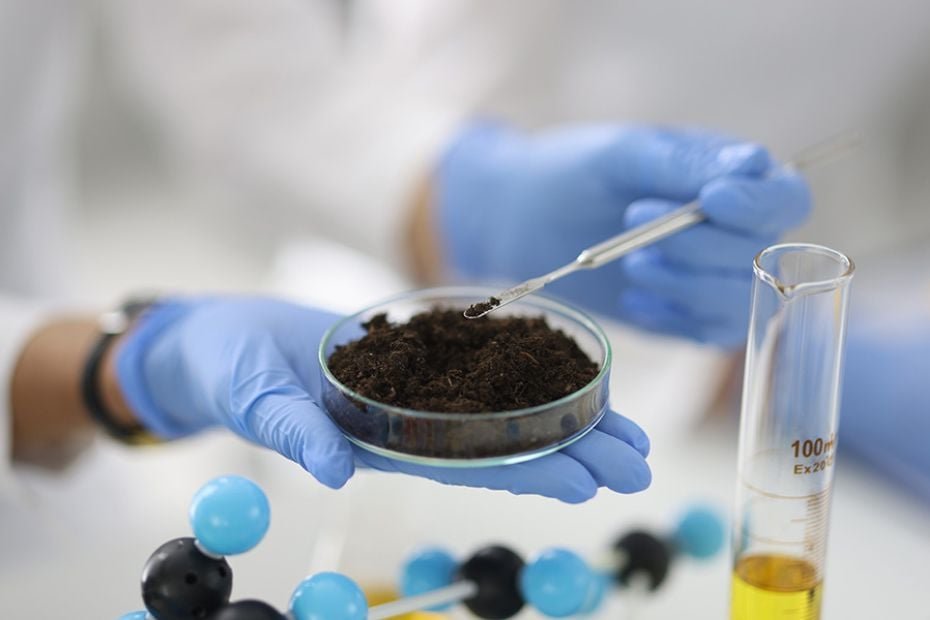
Image: Supplied
While dry, degraded soil may appear lifeless on the surface, beneath it lies a complex and dynamic system of interaction between plant roots and microbial communities. These biological exchanges, though often invisible, play a critical role in determining soil health and crop productivity. Now, new research published in Science—one of the world’s leading scientific journals—by American University of Sharjah (AUS) and international collaborators, is challenging conventional approaches to agriculture and highlighting the need to manage these relationships with ecological precision.
The paper, titled “Steering Plant–Soil Feedback for Sustainable Agriculture,” is the result of a year-long collaboration between five scientists: Dr. John Klironomos, Professor of Biology, Chemistry and Environmental Sciences and Associate Dean for Research and Innovation at the AUS College of Arts and Sciences; Professors Guangzhou Wang, Fusuo Zhang and Junling Zhang from China Agricultural University; and Professor Wim van der Putten from the Netherlands Institute of Ecology and Wageningen University.
At the heart of the research is the concept of plant–soil feedback—the idea that plants shape the microbial environment in the soil via their root systems and biochemical signals. These microbial communities, in turn, influence how plants access nutrients, water, and protection from pathogens. The paper emphasizes that depending on how these feedback loops are managed, they can either support or undermine the sustainability of agricultural systems.
Arid regions
For the UAE and other arid regions grappling with saline soils, limited organic matter and water scarcity, this research offers practical pathways forward. At AUS, Dr. Klironomos and his team are conducting field trials using microbial inoculants—beneficial fungi and bacteria introduced into the soil—and biostimulants to support the growth of desert crops like wheat and date palms. These trials are designed to test how microbial partners can enhance resilience under harsh conditions.
“Plants and microbes have always influenced each other,” said Dr. Klironomos. “The key is managing those interactions with purpose, especially in environments where every biological advantage matters. This work helps shift the focus from short-term yield to long-term soil function.”
The study also repositions several traditional agricultural practices—such as crop rotation, intercropping, and reduced tillage—as valuable ecological tools. When applied with knowledge of microbial dynamics, these practices can improve soil health, reduce reliance on chemical inputs, and contribute to more stable growing environments over time.
“Microbial life is one of agriculture’s most overlooked tools,” said co-author Professor Junling Zhang. “When we support the living processes in soil, we create systems that are more sustainable, more adaptive and better aligned with how ecosystems naturally function.”
Read: Insights: Greening the desert through regenerative farming
In addition to ecological insights, the paper also draws from advances in molecular biology. Researchers are now identifying the genetic and molecular signals that facilitate plant–microbe communication, opening up new breeding strategies to develop crop varieties that naturally enhance soil microbial interactions.
Building on this foundation, AUS has joined hands with regional experts to form the Sharjah Sustainable Agriculture Research Group. The team includes Dr. Klironomos; Dr. Mohamed Abouleish, Professor in Biology, Chemistry and Environmental Sciences; Dr. Tarig Ali, Professor in Civil Engineering; and Dr. Ali El-Keblawy from the University of Sharjah. Together, they are combining expertise in soil ecology, native plant conservation, biotechnology, and spatial analysis to restore the biological function of arid soils.
At the core of the research is a shift in perception: soil is not inert—it is a living ecosystem. It changes, it breathes, and it responds to how we care for it. The authors argue that viewing soil through this lens can pave the way for agricultural solutions that simultaneously address food security, climate adaptation, and biodiversity conservation.
The full paper appears in the July 2025 edition of Science. You can read it here.

